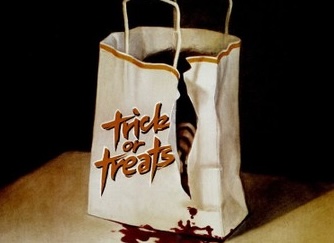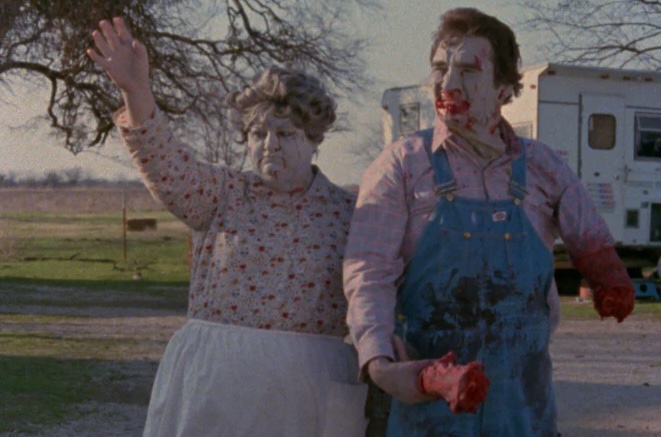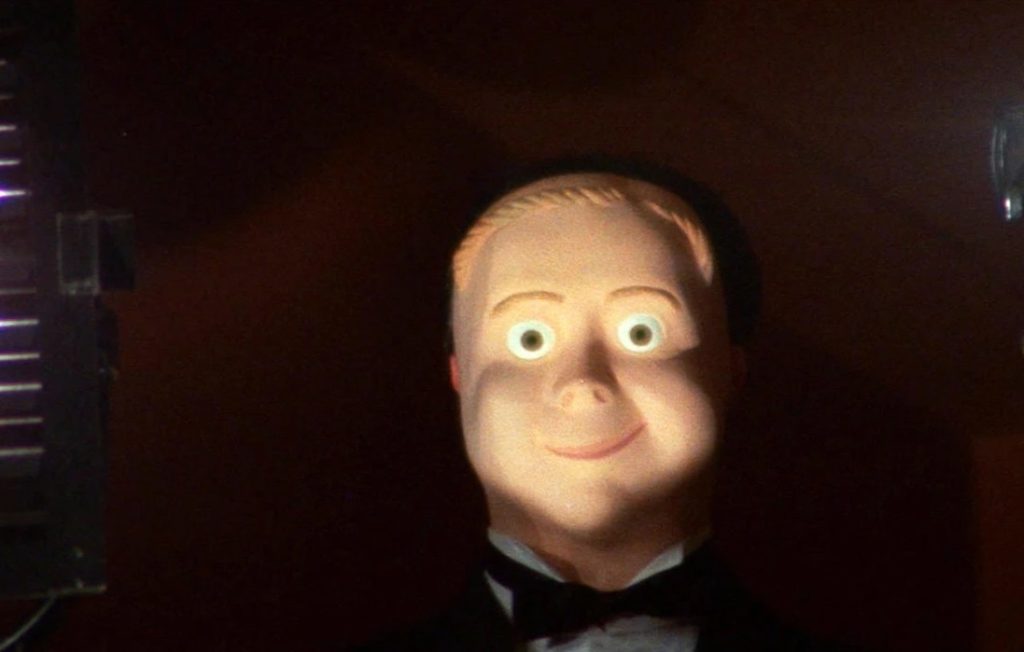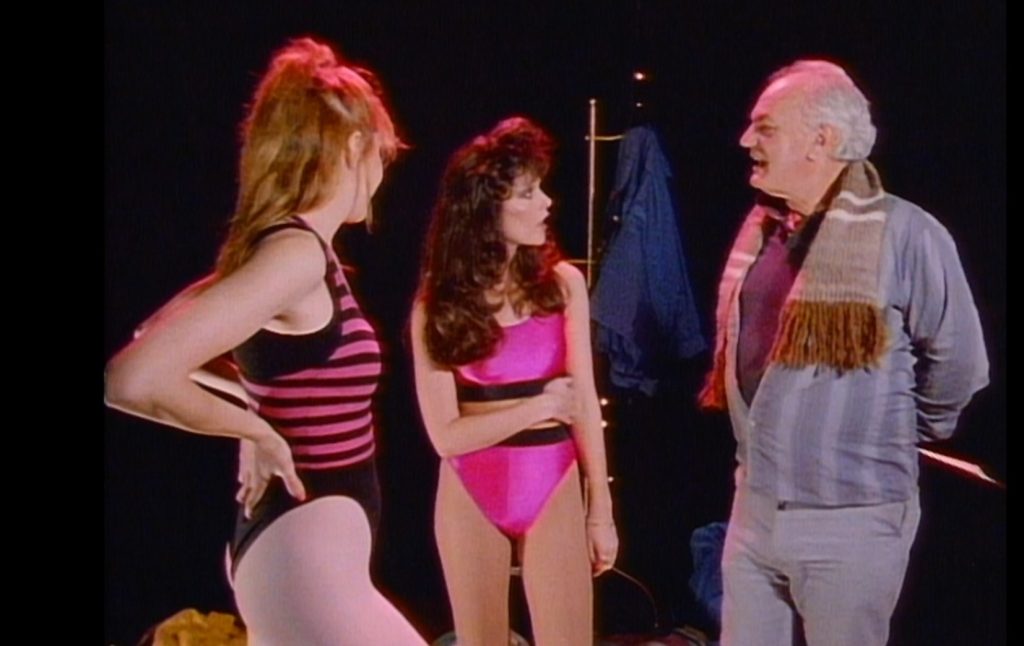Hack-o-Lantern – 1988, US, 87m. Director: Jag Mundhra.
Trick or Treat – 1986, US, 98m. Director: Charles Martin Smith.
Trick or Treats – 1982, US, 90m. Director: Gary Graver.

HACK-O-LANTERN (1988) Satanist and part-time pumpkin farmer, Hy Pyke, initiates his grandson, Tommy, into the world of evil—Devil-worshipping, not pumpkins—before immolating the boy’s father and leaving his mother a nervous wreck. Years later, the eternally scowling Tommy (Gregory Scott Cummins) has turned into a social pariah who dreams of becoming a rock star while waiting to fulfill his destiny as the rightful heir to the Prince of Darkness. Meanwhile, someone in a ceremonial robe and Devil mask is skewering people with a jagged pitchfork on Halloween night. Hack-o-Lantern might be low on logic, but it’s high on cheesy splatter, bad writing, and bare-breasted blondes who look like they just stepped out of a Whitesnake video. The movie also features incredulous performances, most notably from Dolemite‘s Pyke who seems to be going for some sort of overacting award. Yet another goofball epic from the director of the equally goofy slasher melodrama Open House (1987). C+
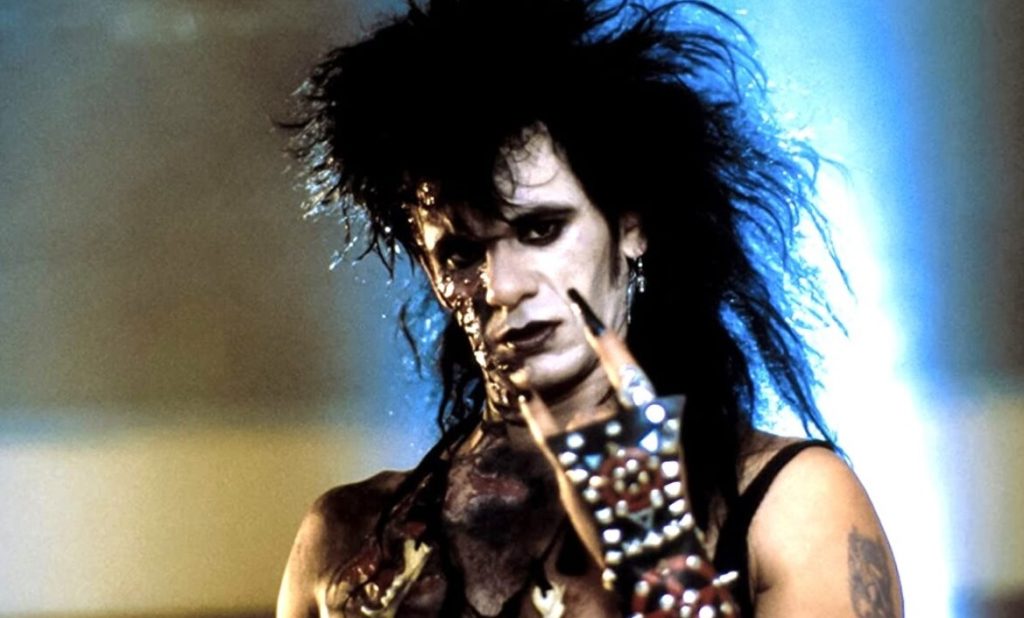
TRICK OR TREAT (1986) Bullied high schooler Eddie (Marc Price) falls under the influence of his favorite rocker, Sammi Curr (Tony Fields), after the dead musician returns from the grave to help Eddie seek vengeance against his tormentors. Eddie receives messages through Sammi’s final record (“Songs in the Key of Death”) instructing the teen on how to eliminate his oppressors—that is until Sammi’s powers grow beyond Eddie’s control, bringing the rocker back into the real world as an unstoppable supernatural being. In a scene reminiscent of the climax of Carrie, Sammi incinerates students with his electric guitar during a school Halloween party. Trick or Treat doesn’t pretend to be anything other than what it is—think Freddy Krueger meets Twister Sister—but that’s most likely why it works. The writers inject the story with subtle humor that flows throughout the script. The characters feel authentic and are played by good actors, although Melrose Place‘s Doug Savant, as Eddie’s schoolyard antagonist, looks out of place as the world’s oldest teenager. (He gets his just desserts in the form of explosive head-banging, in the most literal of senses.) This was the directorial debut for actor Charles Martin Smith, who at that point had been directed by George Lucas, John Carpenter, and many others—and judging from Trick or Treat, the man learned well. B

TRICK OR TREATS (1982) The plot of Trick of Treats—a babysitter is terrorized by an escaped lunatic on Halloween night—is ripped directly from a certain 1978 holiday classic starring Jamie Lee Curtis. The difference with Trick or Treats is that its done tongue-in-cheek. Unfortunately, that doesn’t stop the movie from being lousy. Unlike Jamie Lee’s smart babysitter in Halloween, the sitter in Trick or Treats (Jacqueline Giroux) is a whiny bimbo who jumps at every shadow. Unlucky for her, the demented father (Peter Jason) of the kid Giroux’s in charge of escapes his institution (his wife had him committed and remarried) and goes back to the family homestead. Jason disguises himself as a nurse—just like Michael Caine in Dressed to Kill—in order to make the trip back to his old neighborhood, where he becomes convinced Giroux is his ex-wife. Trick or Treats is an uninspired and lifeless slasher, which doesn’t even feature the three B’s the subgenre is known for: boobs, butts, and blood. This one’s staler than an old piece of candy corn. D

